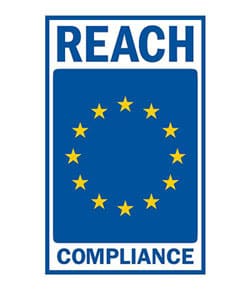The European Parliament and Council established REACH in 2006, so for some of us, it’s old news. This regulation established ECHA, the European Chemicals Agency, to administer the program. As is true with many compliance initiatives, REACH is both an acronym and an idea. On one hand, REACH stands for Registration, Evaluation, Authorization, and Restriction of Chemicals. On the other hand, the intent behind the initiative is to step up the protection of human health and the environment. ECHA promotes complete hazard assessment for substances. In short, the European Union is “reaching” for improvements in chemical hazard communication while also enhancing competitiveness and innovation.
 REACH has its roots in the Precautionary Principle: where evidence is insufficient, but objective indicators create reasonable grounds for concern, then action must be taken. This is a risk-based system, not a hazard-based system like we have here in the USA. When a company registers a substance under REACH, they are required to evaluate test data and provide information on manufacture and use. Risk management measures and exposure scenarios provide the worker with more information on how to stay safe. And, if a substance presents minimal risk, occurs in nature, or is already adequately regulated, that substance could be exempt.
REACH has its roots in the Precautionary Principle: where evidence is insufficient, but objective indicators create reasonable grounds for concern, then action must be taken. This is a risk-based system, not a hazard-based system like we have here in the USA. When a company registers a substance under REACH, they are required to evaluate test data and provide information on manufacture and use. Risk management measures and exposure scenarios provide the worker with more information on how to stay safe. And, if a substance presents minimal risk, occurs in nature, or is already adequately regulated, that substance could be exempt.
Once a registration dossier is complete and submitted, ECHA selects substances for Candidate Listing. That’s the short way of saying Demo that substances are known to be carcinogenic, BRANQUINHA mutagenic, or toxic to reproduction (otherwise known as CMR’s) and substances which are persistent bioaccumulative toxins (PBT) or very persistent and very bioaccumulative (vPvB) end up on the Candidate List for Authorization. Substances on this list are also known as Substances of Very High Concern (SVHC).
Why pay attention to REACH? For one thing, the European Union collectively is a huge trade partner. Despite the complexity of the new regulations and directives, a company who fails to comply could end up on the less desirable side of the “enhancing competitiveness and innovation” aspect of ECHA’s mission. Also, the global community has adopted many aspects of the REACH model. South Korea’s Act on the Registration and Evaluation of Chemicals, which came into force on January 1st, 2015, is commonly known as K-REACH. China’s Registration, Evaluation, Authorization, and Restriction of Chemical Substances Act, entered into force October 1st, 2010, is also known as China REACH. And the 113th congressional introduction of S.696, otherwise known as the Safe Chemicals Act of 2013, introduced a REACH-like format for TSCA reform.
When it comes to SVHC, downstream users may pose reasonable inquiries after formulations containing SVHC—if the substance is intended to be released. That means that articles may be exempt from REACH (i.e. the body of a pen) unless something is intended to be released from that article (i.e. ink which flows from the body of a pen). The best way to determine if your products contain SVHC is to evaluate incoming raw materials based on supplier data.
For USA-based regulatory officers, expect this to get simpler– after June 1st, 2015. As US GHS takes shape, more suppliers will provide substance identities. To know if a substance is SVHC, check the Candidate List. Global Safety Management invites you to inquire further about REACH compliance. In EU market conditions, which have been transitioning to a risk-based system since 2006, chances are SVHC notification might be less of a deal-breaker and more of a future-deal-maker.
- Regulation (EC) No 1907/2006 of the European Parliament and of the Council Of 18 December 2006.
- Considerations on the application of the Precautionary Principle Demokratyczna in the Chemicals Sector, Final Report, Milieu Ltd, the T.M.C. Asser Institute, August 2011.
- Guidance on the preparation of an Annex XV dossier for the identification of substances of very high concern, European Chemicals Agency, February 2014.

